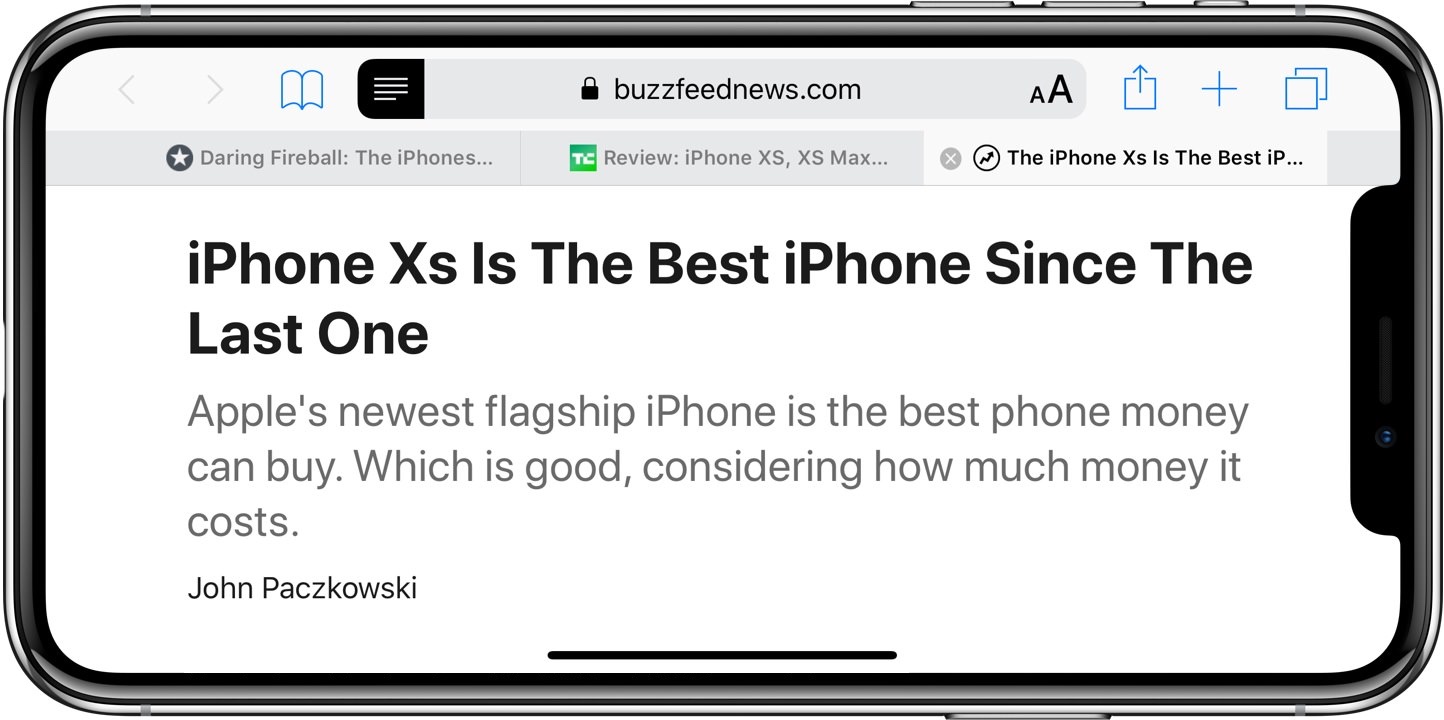Gelesen statt geschaut: Drei Reviews zum iPhone XS (Max)

Es ist dieser Tage ziemlich verlockend sich auf YouTube die Video-Reviews zu den neuen iPhones reinzuziehen und die langen (Blog‑)Artikel links liegen zu lassen. Wer hat tatsächlich die Zeit, sich Hunderte von Wörtern reinzupfeifen, wenn es auch ein schnelles Fazit mit hübschen B-Roll-Bildern gibt?
Meine Frage ist tatsächlich kein Sarkasmus: Viele der Informationen zu den neuen Telefonen transportiert ein Video ganz hervorragend (und sehr anschaulich). Videos zeigen, was Text nur umschreiben kann. Andererseits leistet ein interessant geschriebener Testbericht, der um die Stärken seines Mediums weiß, eine Informationsdichte und eine Erzählstruktur, die kein Video in überschaubarer Länge jemals erreicht.
Drei dieser hervorragenden Artikel, die diese Qualität in Bezug auf den Testbericht zum iPhone XS erreichen – und euch Informationen mitgeben, die ihr bislang in keinem YouTube-Video gesehen habt – sind diese drei Kandidaten hier.
I’m going to say something now that is surely going to cause some Apple followers to snort, but it’s true. Here it is:
For a company as prone to hyperbole and Maximum Force Enthusiasm about its products, I think that they have dramatically undersold how much improved photos are from the iPhone X to the iPhone XS. It’s extreme, and it has to do with a technique Apple calls Smart HDR.
John Paczkowski, BuzzFeed News
My daughter has an iPhone 7. The other day I handed her the Xs Max. She was puzzled in a “Why was this handed to me?” sort of way. I raised an eyebrow. “Oh,” she said. “This is the new iPhone. … It’s bigger.” Then, without a second thought, she handed it back to me, returning to whatever she was doing on her 7. Disappointedly, I said, “You’re not interested in the new iPhones? Not at all?”
“Not really,” she replied. “My phone works fine.”
Then my daughter suggested that, perhaps, the reason I care about new iPhones and she doesn’t is because once upon a time, way back a long time ago when the smartphone universe consisted of nothing more elaborate than…flip phones, I had to use one. Meanwhile, she has known only the iPhone — and other phones that look and behave like it.
I knew that last year’s iPhone X was thicker than the previous few years of iPhones, which was interesting in and of itself. But I didn’t think about it as part of a years-long trend. The iPhone 5 series phones (including the SE) were all 7.6 mm thick, with no camera bump. Ignoring the bumps, the iPhone 6 slimmed to 6.9 mm, and thickness crept up to 7.1 mm with the iPhone 6S and 7, and then up to 7.3 with the iPhone 8. (The Plus model counterparts of each generation were all 0.2 mm thicker.) One common refrain during the iPhone 6 era was Apple had taken its obsession with thinness too far. No one thought the iPhone 5 wasn’t thin enough, but lots of people had problems getting all-day battery life. Why didn’t Apple maintain the same overall thickness of the thin-enough iPhone 5 and use the extra volume for a slightly bigger battery?
Well, the iPhone X, XS, and XS Max are all 7.7 mm thick — just a hair thicker than the iPhone 5. And those iPhones all share the biggest ever camera bump — at the bump, they’re all 9.05 mm thick. And the iPhone XR is even thicker: 8.3 mm. Apple does tend to make its products ever thinner and lighter, but they’ve reversed course. Every model in the iPhone X series is thicker than any iPhone since the 4S, and each generation of iPhone has gotten thicker since the iPhone 6. I think this is the right trade-off, both for battery life and to allow for a bigger camera.